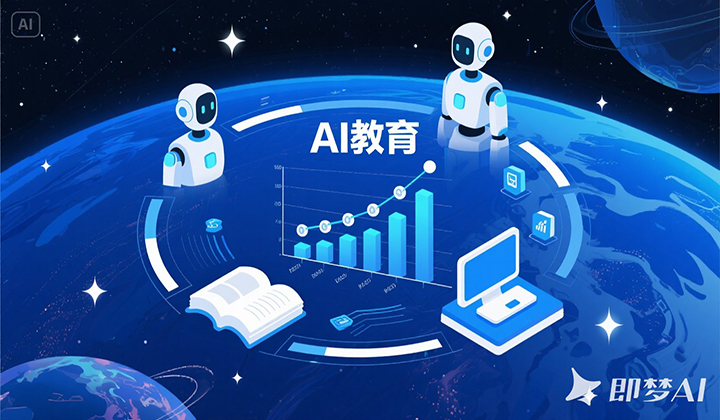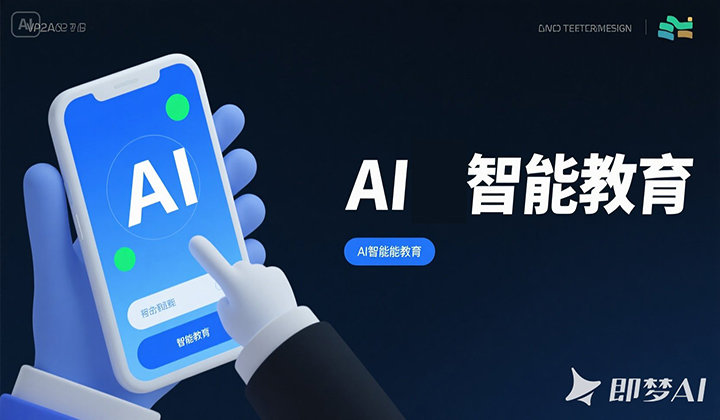The Role of AI Education in Holistic Education
As the global education landscape shifts from rote memorization to cultivating well-rounded individuals, the concept of holistic education—also known as quality education—has gained significant importance. Holistic education emphasizes not only academic knowledge, but also critical thinking, creativity, emotional intelligence, collaboration, and social responsibility. In this evolving context, AI education is emerging as both a tool and a catalyst. But what exactly is the role of AI in fostering a more balanced, human-centered form of learning?
1. Personalized Pathways to Comprehensive Development
At the core of holistic education is the understanding that every student learns differently. Artificial Intelligence enables personalized learning experiences by analyzing students’ strengths, weaknesses, learning preferences, and progress. This data-driven approach allows AI to recommend customized content that caters to not just academic subjects, but also soft skills like communication, leadership, and time management.
For example, platforms powered by AI can adapt reading materials to encourage empathy, or present challenges that foster resilience. In this way, AI supports individualized journeys that nurture both cognitive and non-cognitive abilities.
2. Encouraging Creativity and Critical Thinking
Traditional standardized systems often constrain students within rigid learning frameworks. AI tools, on the other hand, are capable of facilitating exploratory learning environments. By offering simulations, open-ended projects, and intelligent prompts, AI allows students to think beyond “right or wrong” and engage in deeper inquiry.
AI-generated feedback can encourage students to reflect, revise, and iterate—core habits of creative and critical thinking. In coding platforms, for instance, students not only learn logic but also engage in problem-solving and innovation.
3. Supporting Emotional and Social Learning (SEL)
An essential pillar of holistic education is emotional intelligence and social development. Some AI systems are now equipped with sentiment analysis and behavioral tracking, which can help educators identify students who may be struggling emotionally or socially. Early detection of anxiety, disengagement, or stress allows for timely intervention.
Additionally, virtual AI agents are being used in SEL programs to simulate scenarios involving conflict resolution, empathy, and ethical decision-making. While AI cannot replace human interaction, it can serve as a valuable supplement in reinforcing emotional and interpersonal skills.
4. Empowering Teachers as Facilitators
In a holistic learning environment, the teacher’s role shifts from knowledge transmitter to mentor and facilitator. AI can assist in this transformation by automating administrative tasks like grading and attendance, freeing teachers to focus on student engagement and character development.
Moreover, AI provides real-time insights into class dynamics, helping educators adapt their instruction to diverse learning styles and emotional needs. With the support of AI, teachers are better positioned to nurture a classroom culture of inquiry, respect, and inclusion.
5. Bridging Gaps Across Disciplines
Holistic education often emphasizes interdisciplinary learning. AI tools can connect knowledge across subjects—for example, by combining history and literature in narrative-based learning, or blending math and music through pattern recognition.
Furthermore, project-based learning supported by AI allows students to apply multiple skills simultaneously, fostering a deeper, integrated understanding of real-world issues. This aligns well with the goals of holistic education, which seeks to prepare students for complexity and interconnectedness in life and work.
Challenges and Ethical Considerations
While AI holds great promise, its role in holistic education must be implemented with caution. Overreliance on data-driven systems may risk reducing students to mere profiles or metrics. Emotional development and values are nuanced and context-specific—qualities AI still struggles to interpret fully.
In addition, unequal access to AI tools may limit their benefits to certain groups, undermining the inclusive ideals of holistic education. Transparency, privacy protection, and human oversight remain critical to ensure that AI complements rather than dominates the learning process.
Conclusion
AI is not a replacement for human-centered education—it is a powerful ally. When designed and applied thoughtfully, AI education can enrich holistic education by personalizing learning, enhancing emotional intelligence, and encouraging creativity and collaboration. The future of quality education lies in leveraging technology not just for efficiency, but for human flourishing.
Educators, technologists, and policymakers must work together to ensure that AI becomes a means of unlocking each student’s full potential—not just academically, but as thoughtful, ethical, and engaged citizens of the world.














